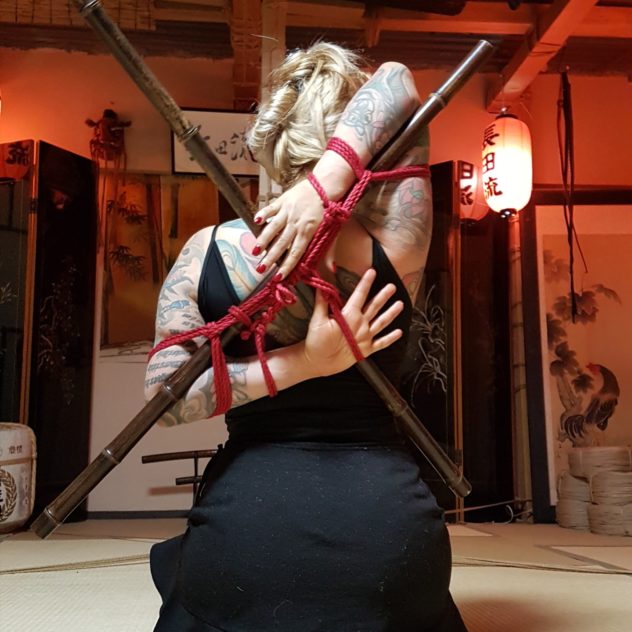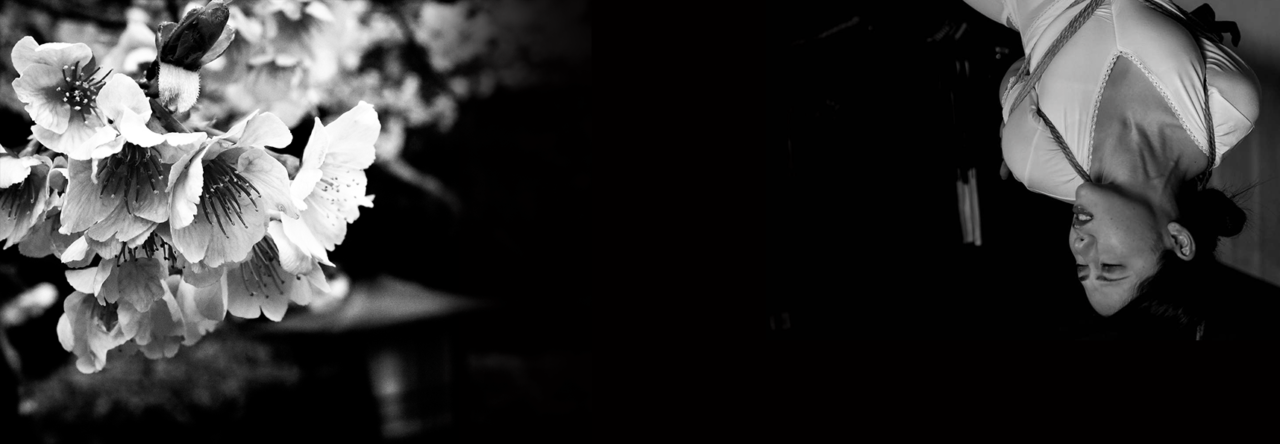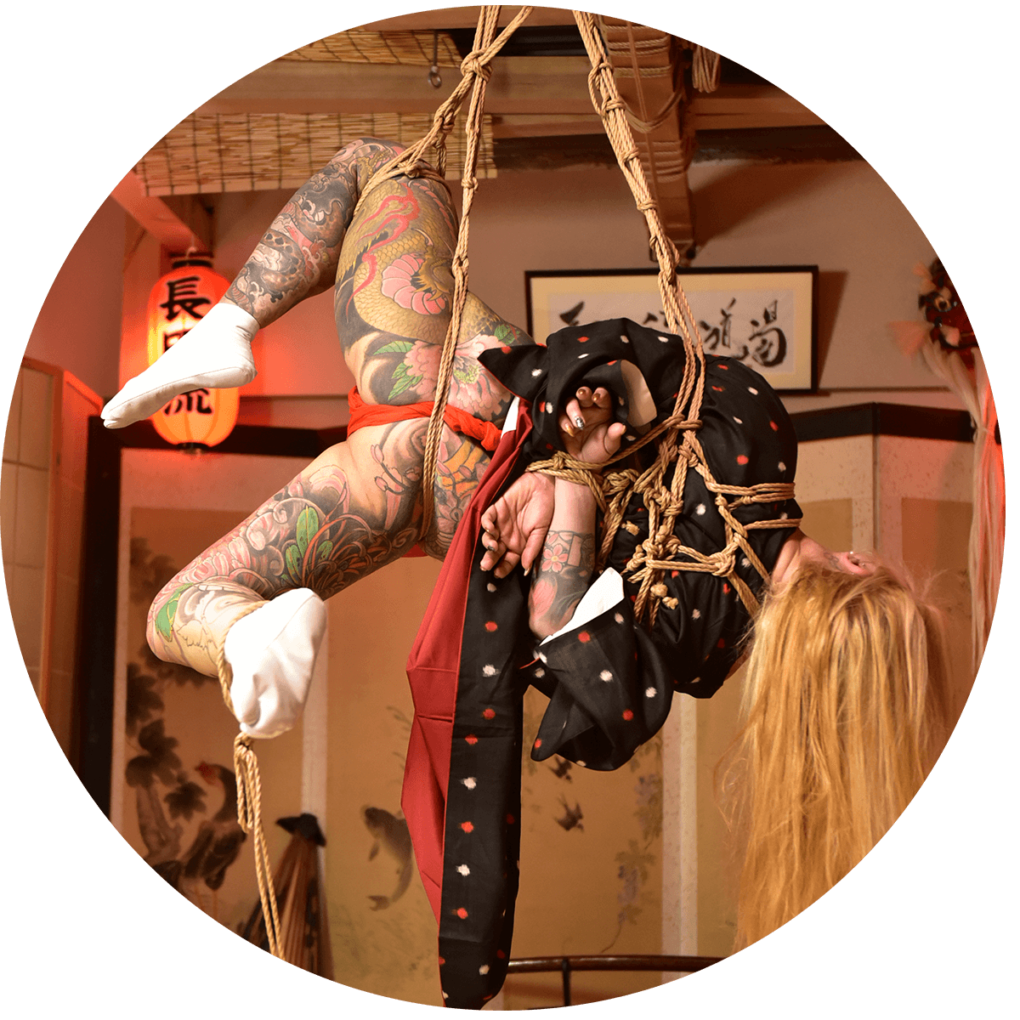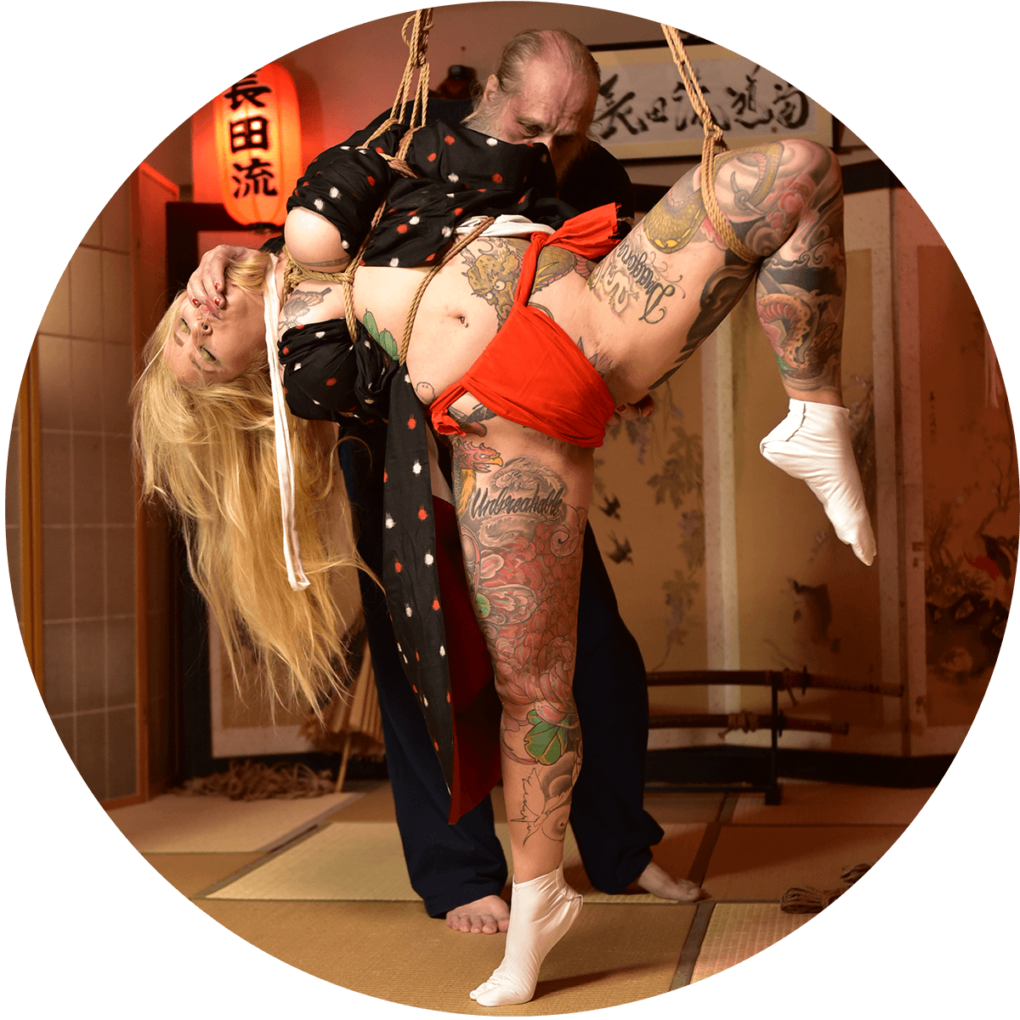When the first Portuguese arrived in Japan in the 16th century, they soon introduced firearms aka Teppô (鉄砲). It is these rifles slung over the shoulders of soldiers that first inspired the teppô shibari ( 鉄砲縛り) and later the teppozuri (鉄砲吊り) aka rifle suspension.

This suspension was popularized by the late shibari grandmaster Akechi Denki (明智伝鬼) and is very popular both on stages and in private.
Despite the traditional name, this pattern is not a classical pattern. There are no templates in hôjô-jutsu or other manuals and martial arts that show this technique. This pattern is a modern interpretation of traditional themes in shibari. It draws on historical imagery, but uses shibari aesthetics.





